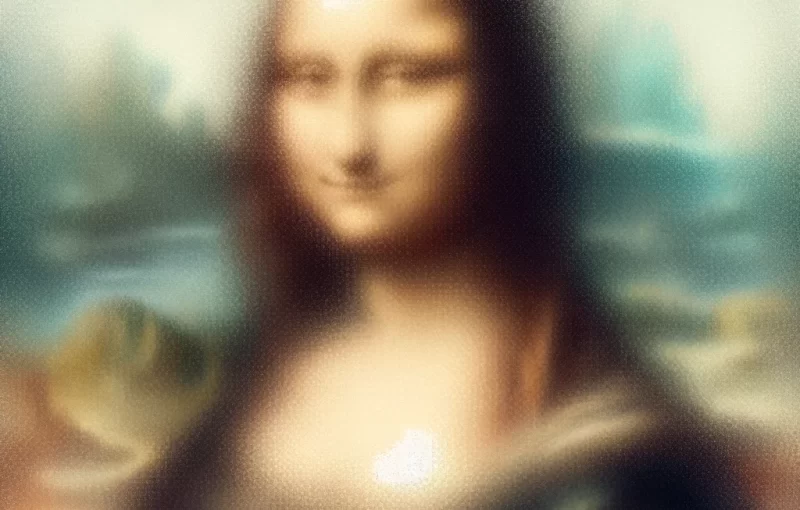
Evaluating Environmental Art: Fuzzy Logic in Practice
by Jon Scaccia June 4, 2024Environmental art design (EAD) is a burgeoning field that melds creativity with sustainability. In a recent study published in Scientific Reports, researchers introduce a novel algorithm called Environmental Art Design using Fuzzy (EADF) to enhance decision-making in EAD.
What is Environmental Art Design?
Environmental art design is an artistic approach that focuses on creating artworks that blend seamlessly with natural environments. These works often aim to raise awareness about environmental issues, foster a stronger connection between people and nature, and promote sustainable practices. The challenge in EAD lies in integrating new materials and technologies while ensuring sustainability and aesthetic appeal.
The Role of Fuzzy Logic
Fuzzy logic is a form of computing that handles imprecise information, making it ideal for evaluating art where subjective judgments are common. Traditional binary logic (true/false) is inadequate for the nuances of art, where opinions can vary widely. Fuzzy logic allows for a spectrum of values, which helps in aggregating expert opinions and delivering consistent results.
Introducing the EADF Algorithm
The EADF algorithm employs a fuzzy-based technique for order preference by similarity to the ideal solution (FTOPSIS). This method evaluates environmental art based on multiple criteria, including visual appeal, environmental impact, sustainability, and community involvement. The FTOPSIS method assesses each artwork against ideal and least ideal solutions, using triangular fuzzy numbers to handle subjective and ambiguous judgments.
Key Components of EADF
- Criteria Evaluation: The algorithm considers various factors such as color, composition, emotion, contrast, clarity, harmony, and sensitivity. Each criterion is weighted to reflect its importance in the overall evaluation.
- Fuzzy Variable Entropy Analysis: This technique determines the weightings of each attribute by analyzing their uncertainty and distinctness. It helps in making nuanced and informed decisions.
- Triangular Fuzzy Numbers: These numbers represent criteria and preference values, providing a flexible and precise way to handle subjective assessments.
- Euclidean Distance Measure: This metric measures the deviation of artworks from ideal results, enabling logical ranking and comparison.
Evaluating Art with EADF
The EADF model was tested and showed superior performance in several categories, including color (83.74), composition (82.37), emotion (85.61), contrast (97.52), clarity (98.16), harmony (95.49), and sensitivity (96.44). This indicates that EADF is effective in evaluating environmental art design, making it a valuable tool for artists, designers, and decision-makers.
Why This Matters
The integration of fuzzy logic in evaluating environmental art is significant for several reasons:
- Enhanced Decision-Making: The EADF algorithm provides a structured and quantitative way to assess artworks, helping artists and designers make informed decisions.
- Sustainability: By considering environmental impact and sustainability, the algorithm promotes eco-friendly practices in art design.
- Community Engagement: The model emphasizes the importance of audience involvement, ensuring that artworks resonate with and engage the community.
Practical Applications
The EADF model can be used in various contexts, from public installations and community art projects to urban planning and interior design. By balancing aesthetic and environmental considerations, it supports the creation of artworks that are both beautiful and sustainable.
Let us know in the comments!
To foster a deeper understanding and discussion, here are two questions for you to consider and comment on:
- How do you think the integration of fuzzy logic can change the future of art evaluation?
- What are some examples of environmental art that have resonated with you, and why?
Conclusion
The EADF algorithm represents a significant advancement in the evaluation of environmental art design. By incorporating fuzzy logic, it provides a comprehensive and flexible framework for assessing artworks, balancing subjective judgments with quantitative analysis. This innovative approach not only enhances decision-making but also promotes sustainability and community engagement in the artistic process.
Feed Your Curiosity:
Discover the latest scientific research and inspiring discoveries with ‘This Week in Science’! Perfect for educators and avid learners, our free weekly newsletter is a rich source of knowledge to enhance your teaching and learning journey. Subscribe now!
Leave a Reply